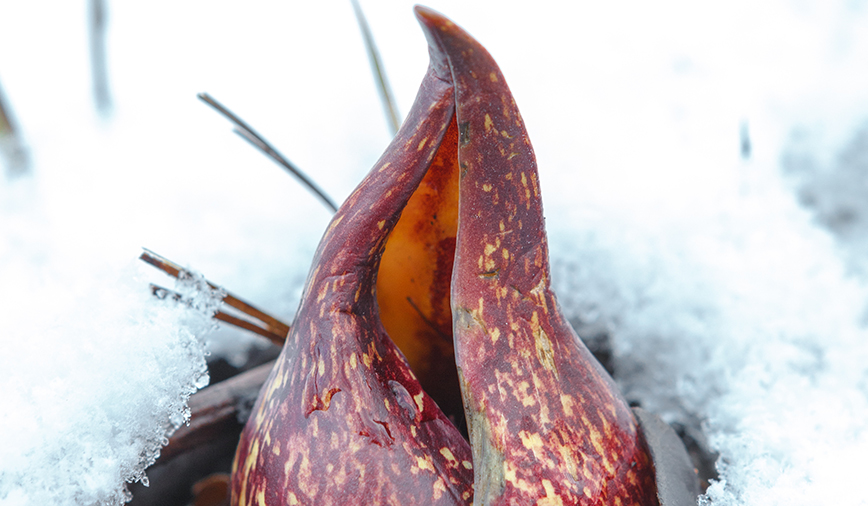How good are you at reading signs?
I think most of us would agree that red octagons mean stop, yellow diamonds mean caution, and orange signs signal that everyone’s favorite season, road construction, has returned.
But have you noticed that other signs too are popping up, right and left? They’re subtle, yet oddly familiar, and indicate that change is underway… They’re undeniable signs of spring. Here, in handy checklist form, are 10 of our naturalist department favorites:
1. Woodpeckers, both male and female, are drumming. Listen for the rapid-fire rat-a-tat of our local species as they pound on hollow trees (and siding and gutters) to declare territories and prepare for mating and nesting.
2. Daylight is lasting longer. Hard to believe, but we’ve added more than 160 minutes to our day length since the winter solstice back in December. Plus, this coming week brings March 20, the spring equinox, when day and night will equal each other at 12 hours apiece. 3. Canada geese are pairing off. They still prefer the safety of the flock at night, but these ever-present members of our suburban landscape have started “dating” during the day. Look for pairs feeding just ever-so-slightly away from each other in areas where that longer-lasting sun has melted the snow off the grass.
4. Mammals are on the move. Our hibernating woodchucks and bats haven’t stirred yet, but mammals that spend the winter in and out of torpor (periods of inactivity) have roused and are out and about. The unmistakable scent of skunk filled the air in my neighborhood one evening last week. Wouldn’t have smelled that a month ago.
5. Male redwing blackbirds have returned. Competition is stiff among these marsh denizens, which happen to be polygynous
(one male, many females) and the early birds definitely claim the better territories. They’ll defend them fiercely throughout the breeding season. (Remember this come June 20-something, when the news will no doubt include reports of redwing “attacks” on unsuspecting folks strolling too close to a well-hidden nest.)
6. Spiders! Next time the sun is out, find a patch of ground where the snow has melted and leaf litter is plentiful. Bet you’ll find spiders there, tiny little guys stalking even tinier insect prey.
7. Male American goldfinches are brightening. Throughout the winter months, these guys have flitted about in drab olive-yellow. But with spring just around the corner, their plumages are beginning to change. Soon they’ll be bright yellow, just as their nickname “wild canary” implies.
8. Maple buds are swelling. Live near a silver maple? Those giant blobs on the ends of the branches are this year’s leaves, coiled up in buds awaiting the first rush of sap. A few more warm days and cool nights and things should really start popping.
9. Willow branches are yellowing. I’m not sure what shift in pigments causes this phenomenon, but if you look around as you’re driving, or walking, you’ll notice these trees really grab your attention. The bright yellow color contrasts with the remaining browns and grays of winter and adds a nice splash of color to otherwise drab landscapes.
10. Skunk cabbage is up! Our earliest blooming wildflower, Symplocarpus foetidus, has popped up in wetlands throughout the TriCities. Chemical reactions allow this plant to generate temperatures 15 to 35 degrees warmer than the surrounding air; besides melting the plant’s snowy blanket, this warmth may also help skunk cabbage spread its stinky (or fetid, as referenced in the Latin name) aroma and attract the carrion-feeding insects it requires for pollination.
I suppose I could go on and on, for more signs of spring are just around the corner. Soon comma, question mark and morning cloak butterflies will come out of hibernation; salamanders will migrate to breeding ponds; frogs will start calling. But I’m sure your eyes are glazing over, and your attention has started to wane…both signs that it’s time to stop with this talk about signs…at least for now.
Pam Otto is the manager of nature programs and interpretive services at the Hickory Knolls Discovery Center, a facility of the St. Charles Park District. She can be reached at potto@stcparks.org or 630-513-4346.

